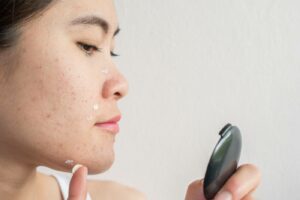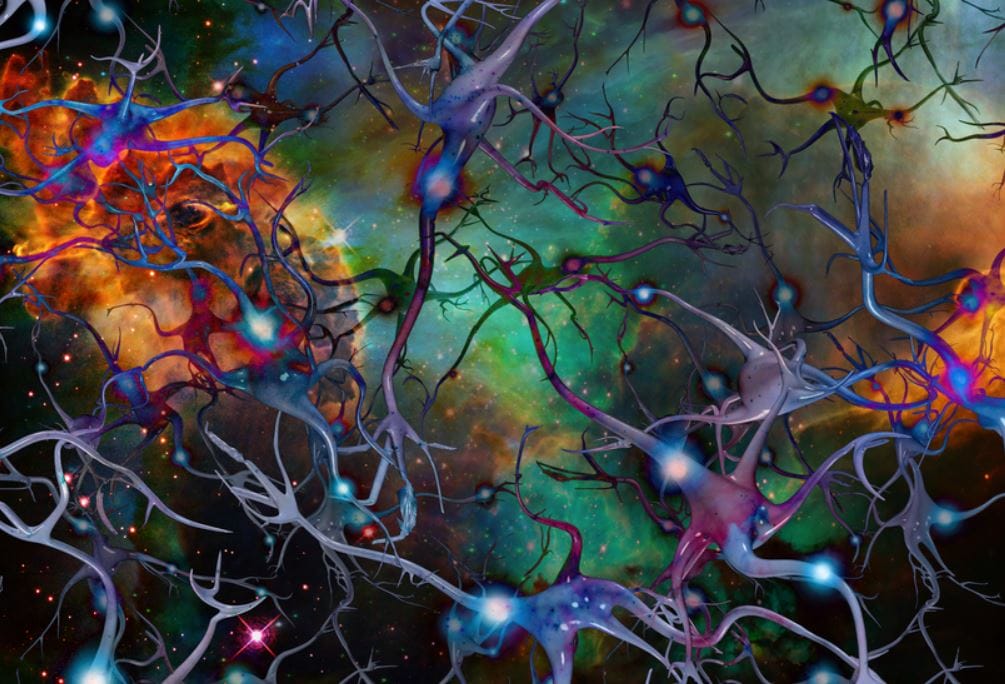Can I Use Peptides With Tretinoin?
December 11, 2023

Can I Use Peptides With Tretinoin? Peptides can generally be used with tretinoin, but you must be careful. Mishandling or inappropriate combined usage of the two can result in redness, irritation, and even severe acne breakouts for sensitive skin.
In this guide, we’ll share the basics of these two compounds and discuss how to use peptides with tretinoin safely. Let’s dive in!
What Are Peptides?
Peptides are made between two and fifty amino acids linked together via peptide bonds (1). They are small in size, which makes it easier for the skin to absorb them.
Recently, laboratory-made peptides have gained much popularity, and you can find many skincare products featuring various combinations of peptides and bioregulators (like hyaluronic acid and retinol).
These products are more commonly known as ‘cosmeceutical peptides,’ and they are believed to help with:
- Increased collagen production in the skin, leading to more firmness and elasticity
- Reduced wrinkles (anti-aging benefits)
- Moisture retention in the skin, leading to plump skin and a youthful glow
- Regulation of sebum production
- Wound healing (accelerated repair of scars and blemishes)
You can consume these products orally, topically, or via intravenous injections (2).
What Is Tretinoin?
Tretinoin is a synthetic form of vitamin A (3). This is why it is often confused with retinol, which is the natural form of vitamin A. Both retinol and Tretinoin are retinoids (i.e., derivatives of vitamin A) (4).
Generally, when someone says a skincare product has a combination of a retinoid and peptide, they mean it’s a combination of retinol and peptide, not tretinoin and peptide.
Why? Tretinoin is not available in over-the-counter products (5). It is a prescription-based medication that is much more powerful in its composition and impact. Because of this, you cannot take it unless your healthcare provider has specifically prescribed it to you.
With that said, dermatologists usually recommend tretinoin-based topical creams to treat acne, sun-damaged skin, and fine wrinkles. It helps the skin by:
- Reducing inflammation caused by acne
- Exfoliating the skin
- Opening up blocked hair follicles
Also, this chemical is not typically well–received by those with sensitive skin due to its powerful composition (6).
Peptides and Tretinoin: What Happens When They Are Combined?
If you’ve been prescribed a tretinoin and a peptide product at the same time or you happen to be using both together, your skin health may improve significantly. That is, of course, if you use them appropriately (7).
Combining the two can benefit your skin by:
- Reducing hyperpigmentation
- Increasing collagen production (leading to better glow and elasticity)
- Reducing wrinkles and fine lines
- Enhancing better skin tone and texture
Again, if you combine the two incorrectly, it can lead to dryness, redness, irritation, acne breakout, and reduced efficacy of both products (8).
How to Safely Use the Two Together
It is generally recommended you apply peptide products first. This ensures that the peptide penetrates effectively into the skin and performs its function without interruption.
You can apply the tretinoin product shortly after peptides in the prescribed quantity. Because tretinoin penetrates the skin deeply, it may make the peptide ineffective if you apply these products in reverse order.
Here are a few more tips for proper application:
- Consult your dermatologist and take their advice.
- Begin with patch testing to assess how your skin reacts to each product separately before combining them.
- Start applying the minimal possible amount of tretinoin and gradually increase the quantity to the prescribed amount.
- Use a cleanser before applying both products.
- Apply sunscreen when exposed to sunlight to minimize the chances of skin damage.
If you are pregnant, have sensitive skin, or suffer from eczema or rosacea, avoid using the two products together. Tretinoin can also be highly damaging to a developing baby and is contraindicated in pregnancy (9).
For more helpful information, check out our posts on what sermorelin peptide is and how long it takes for peptides to work!
Legal Disclaimer
This product has not been approved by the US FDA. All statements on this page are for informational purposes only and have not been evaluated by the US FDA.
This product is not intended to diagnose, treat, cure, or prevent any disease. See more
Sources:
- https://www.ncbi.nlm.nih.gov/books/NBK562260/
- https://pubmed.ncbi.nlm.nih.gov/18045359/
- https://www.ncbi.nlm.nih.gov/books/NBK557478/
- https://www.ncbi.nlm.nih.gov/pmc/articles/PMC8750127/#:~:text=In%20general%2C%20retinoids%20are%20divided,trifarotene%2C%20alitretinoin%2C%20and%20bexarotene.
- https://www.ncbi.nlm.nih.gov/pmc/articles/PMC8675340/
- https://www.ncbi.nlm.nih.gov/pmc/articles/PMC3225141/
- https://pubmed.ncbi.nlm.nih.gov/20374604/
- https://www.sciencedirect.com/topics/agricultural-and-biological-sciences/tretinoin
- https://www.ncbi.nlm.nih.gov/pmc/articles/PMC5064676/#ref15



